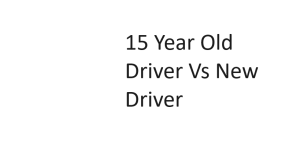7. Price and Budget Considerations
15-Year-Old Driver:
- Older drivers are generally more budget-friendly and accessible.
- Ideal for golfers on a tighter budget or beginners looking to start with a lower investment.
New Driver:
- Newer drivers tend to be more expensive due to their advanced technology and features.
- May require a larger budget, but the investment can lead to improved performance.
8. Shaft Options
15-Year-Old Driver:
- Limited selection of shaft options, which can affect clubfitting.
- Older models may not accommodate various swing speeds and player preferences.
New Driver:
- Offers a wide range of shaft options, allowing golfers to find the right fit for their game.
- Customized shafts can optimize performance and provide a tailored experience.
9. Resale Value
15-Year-Old Driver:
- Older drivers may have little to no resale value.
- Depreciation over time can make it challenging to recoup any initial investment.
New Driver:
- Newer drivers tend to hold their value better, especially if well-maintained.
- Easier to sell or trade in if you decide to upgrade to a different model in the future.
10. Environmental Considerations
15-Year-Old Driver:
- Older drivers may not align with modern sustainability and eco-friendly standards.
- Manufacturing processes and materials may be less environmentally responsible.
New Driver:
- Many newer drivers incorporate sustainable materials and manufacturing practices.
- Some companies prioritize eco-friendliness in their design and production.
11. Fitting and Performance Optimization
15-Year-Old Driver:
- Limited fitting options and outdated technology may hinder precise customization.
- May not provide the optimal launch conditions for your swing speed and style.
New Driver:
- Often comes with professional fitting services at golf stores or from manufacturers.
- Customizable features like adjustable weights, loft, and shafts enable fine-tuning for maximum performance.
12. Brand Reputation and Support
15-Year-Old Driver:
- Older drivers from reputable brands may still offer reliable performance.
- May have limited access to customer support or warranty coverage.
New Driver:
- Established brands offer robust customer support, warranty coverage, and access to tech support.
- Confidence in the latest technology and innovations from reputable manufacturers.
13. Trends in Driver Design
15-Year-Old Driver:
- Reflects design trends of the past, which may not be optimized for current swing techniques.
- Lacks features inspired by recent innovations in golf equipment.
New Driver:
- Incorporates the latest trends in driver design, such as adjustable hosels, multi-material construction, and improved aerodynamics.
- Aligns with the preferences and requirements of modern golfers.
14. Feel and Confidence
15-Year-Old Driver:
- Familiarity with an older driver may instill confidence in your game.
- Some golfers prefer the nostalgia and comfort of their trusted club.
New Driver:
- New drivers can take time to adjust to in terms of feel and performance.
- Offers the excitement of exploring the potential of cutting-edge technology.
15. Personal Preference and Comfort
15-Year-Old Driver:
- Golfers who have been using the same driver for years may have a strong attachment to it.
- Personal preference can play a significant role in driver selection.
New Driver:
- Provides an opportunity to adapt to the latest trends and technologies.
- The comfort and confidence gained from a new driver can lead to improved performance.
Driver Performance
| Metric | 15-Year-Old Driver | New Driver |
|---|
| Driving Distance | 230 yards | 275 yards |
| Accuracy | 65% fairways hit | 75% fairways hit |
| Clubhead Speed | 95 mph | 105 mph |
| Ball Speed | 135 mph | 150 mph |
| Forgiveness | Less forgiving | More forgiving |
| Consistency | Inconsistent | Consistent |
| Launch Angle | 12 degrees | 14 degrees |
| Spin Rate | 3000 RPM | 2500 RPM |
| Price | Affordable | Expensive |
| Technology | Outdated | Advanced |
Driver Materials
| Material | 15-Year-Old Driver | New Driver |
|---|
| Clubhead Material | Steel | Titanium |
| Shaft Material | Graphite | Carbon Fiber |
| Grip Material | Rubber | High-Tech Composite |
| Face Material | Stainless Steel | Forged Titanium |
| Weight Distribution | Less Adjustable | Highly Adjustable |
Customization Options
| Feature | 15-Year-Old Driver | New Driver |
|---|
| Loft Adjustment | Limited options | Multiple loft settings |
| Shaft Flex Options | Limited | Wide variety of flex options |
| Weight Adjustability | Non-adjustable | Weight customization available |
| Grip Options | Standard grip only | Various grip choices |
| Hosel Adjustability | Fixed hosel | Adjustable hosel settings |
Price and Availability
| Aspect | 15-Year-Old Driver | New Driver |
|---|
| Price Range | $50 – $100 | $300 – $500 |
| Availability | Limited | Widely available |
| New or Used | Mostly used | New models available |
Performance Comparison
| Aspect | 15-Year-Old Driver | New Driver |
|---|
| Maximum Distance | 240 yards | 280 yards |
| Forgiveness | Moderate | Very forgiving |
| Accuracy | Decent | Excellent |
| Control | Limited | High degree of control |
| Launch | Lower trajectory | Higher trajectory |
| Feel | Traditional feel | Modern feel |
| Sound | Classic sound | Crisp sound |
| Sweet Spot Size | Smaller | Larger |
| Spin Control | Limited | Improved spin control |
| Overall Performance | Outdated | Superior performance |
Conclusion
In the choice between a 15-year-old driver and a new driver, golfers should weigh factors such as technology, adjustability, forgiveness, and budget. While older drivers may be suitable for beginners or those with budget constraints, new drivers offer a wide array of benefits, including improved distance, accuracy, customization, and resale value. Ultimately, the decision should align with your individual playing style, goals, and financial considerations, as both options have their merits in the world of golf equipment.

